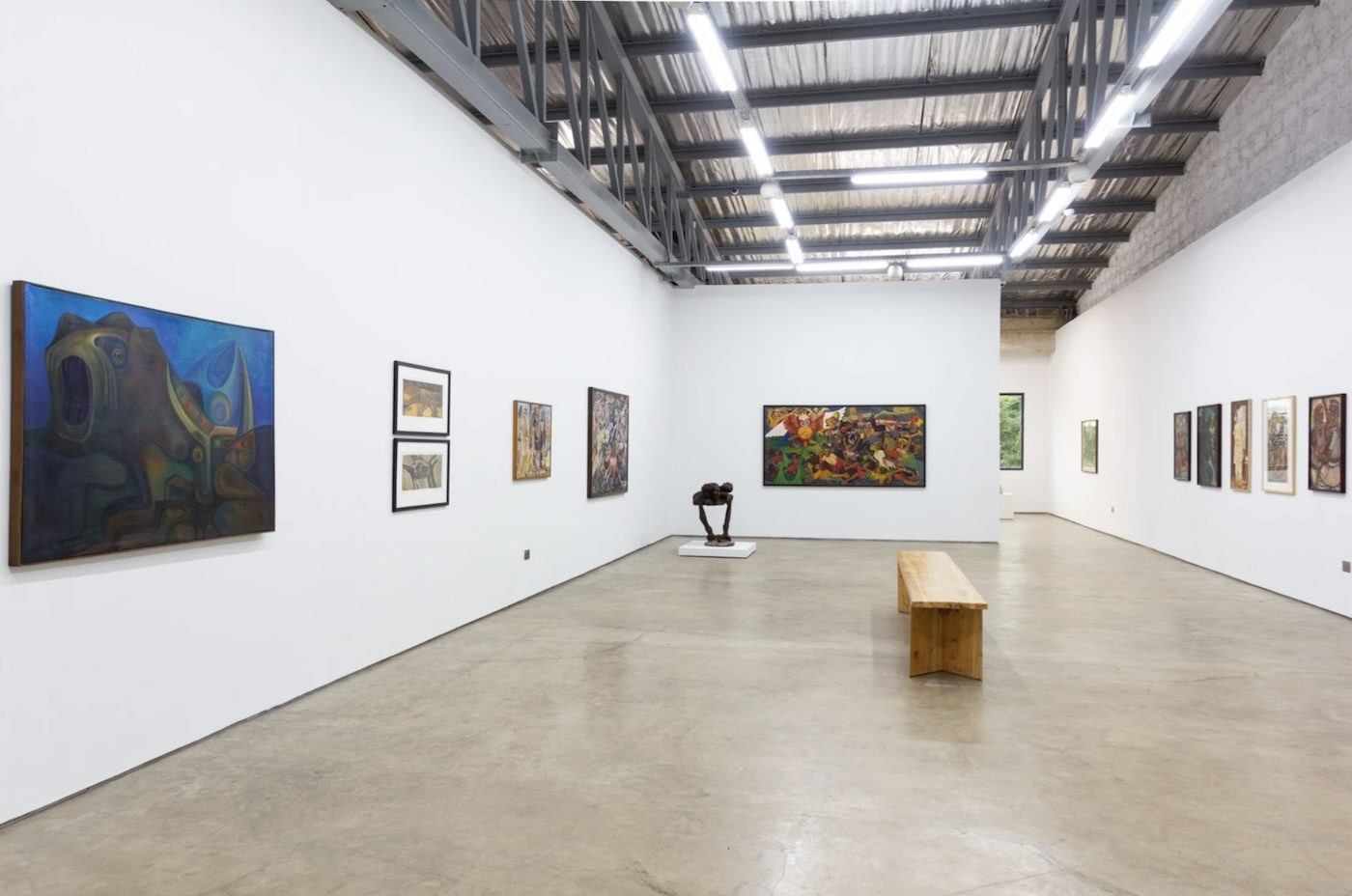Mangrove Ecologies: Grounded Forms of Questioning in the Art/World
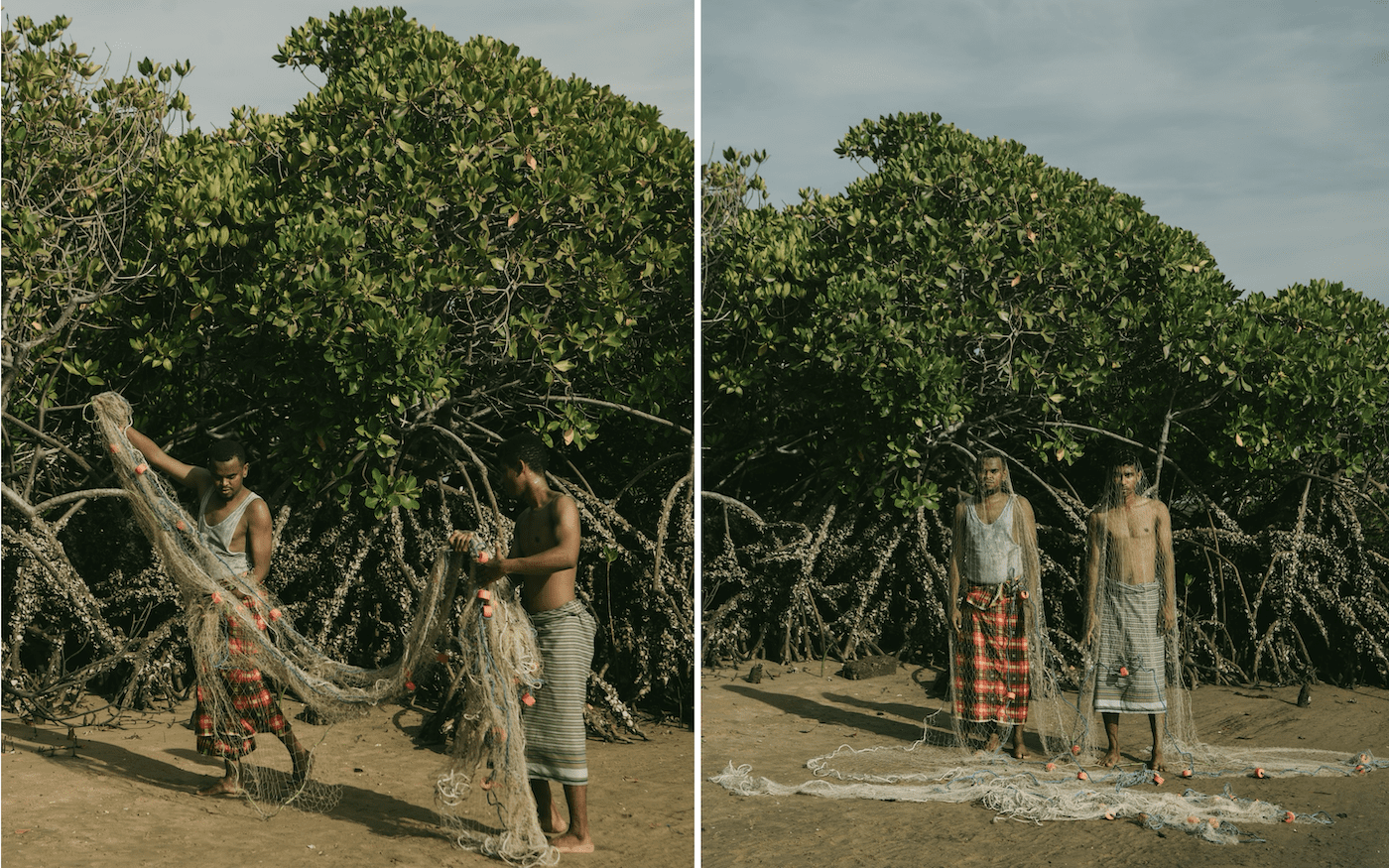
17 July 2025
Magazine C& Magazine
Words Ann Mbuti
7 min read
Reflecting on a residency program between Lamu Kenya and Basel Switzerland, writer Ann Mbuti asks regarding the paradoxes of artistic impact: What does it mean to conduct artistic research in a context shaped by asymmetries of power and histories of extraction? What forms of exchange are possible? What forms of care are required?
At the end of May 2025, a massive landslide broke loose in the Swiss Alps. Tons of debris tumbled down the steep mountainside near the small village of Blatten, devastating the landscape and forcing dozens of residents to evacuate. The earth, weakened by prolonged drought and unstable weather patterns, had given way – a clear sign of the climate crisis which is no longer an abstract phenomenon. The pictures were marvelous – a perverse, morbid aesthetic of disaster.
In mid-June, less than 200 kilometers away, one of the world’s most influential art fairs opened its doors. Even at Art Basel, the topic of climate change permeated meaningful PR texts, significant declarations of intent, and the self-imposed goal of a reasonable ecological footprint. The art world held its societal mission to make the world a better place; one panel talk at a time.
In recent years, crises have not only increased in number, but also in intensity and complexity. Climate disasters, political instability, economic insecurity, and the rise of authoritarian narratives no longer unfold in isolation, but reinforce each other. And the comfortable notion that art operates at a safe distance from these dynamics has become untenable. In fact, the very concept of distance – between inside and outside, center and periphery, privilege and precarity, global north and south – has begun to dissolve. What can art possibly offer in the face of such real, material crises?
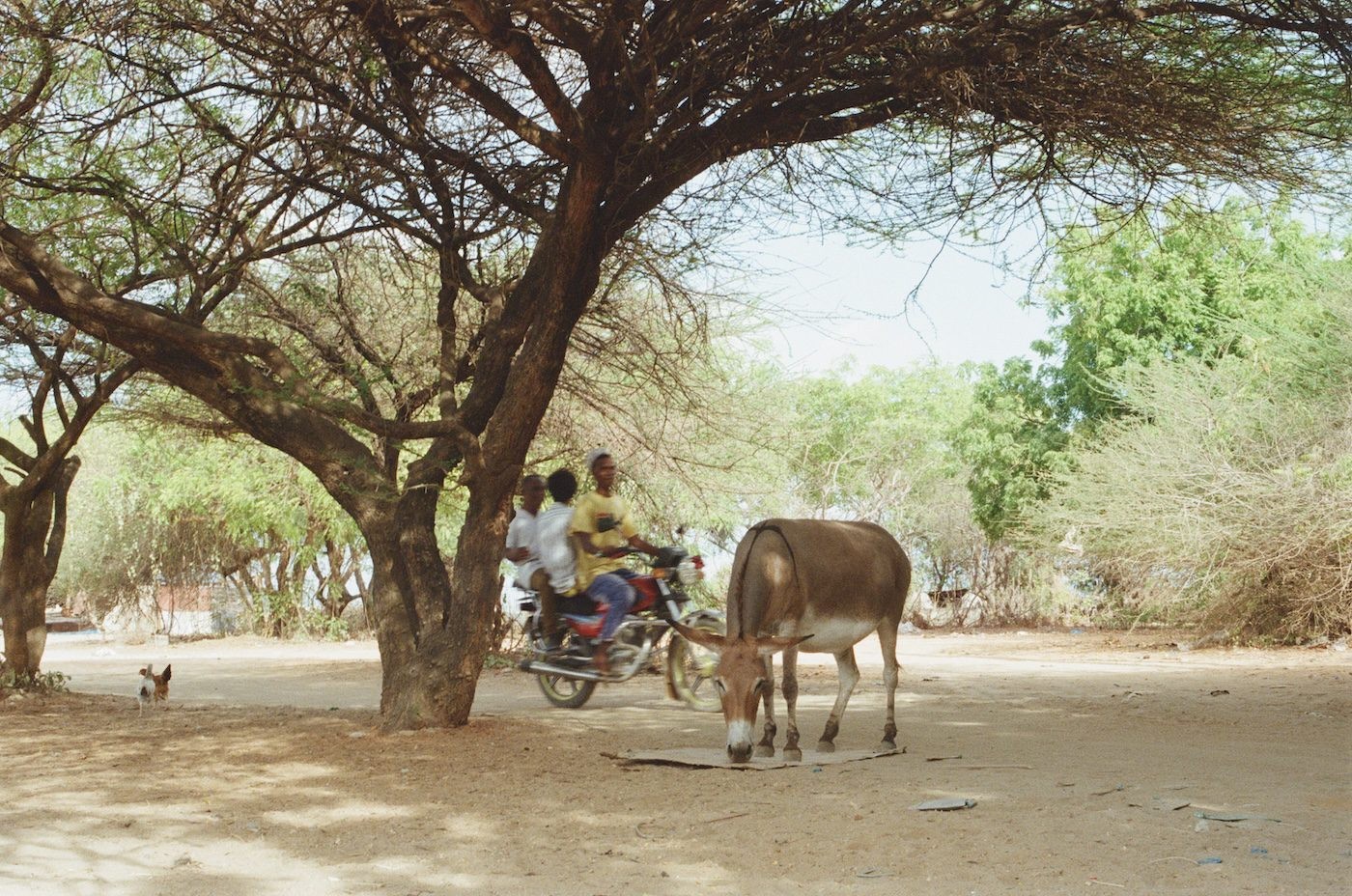
Bodas and donkey. Credits: Yassine Rachidi
Situated Tracing
This is a question I keep returning to, recently more so in the context of Mangrove Ecologies. For the past months, I have been part of a transdisciplinary residency and research project that brings together two Kenyan practitioners – sound artist Joseph Kamaru and urbanist David Njenga Muiruri – and two with a Swiss connection – artist and researcher Yassine Rachidi and myself. The project was structured around two residency phases in Lamu, Kenya, a region shaped by tidal rhythms, colonial legacies, and contemporary pressures.
In mid-June, in conjunction with Art Basel, a small off-site installation of our project opened in Basel. It served as a kind of echo of a larger process unfolding thousands of kilometers away: our collaborative research set out to explore the ecological, social, and symbolic dimensions of mangrove forests. In many ways, this Basel installation embodied the very paradox: an art installation born from site-specific research in a fragile coastal ecosystem, presented in one of Europe’s most institutionalized art contexts – funded, observed, and interpreted from within the structures it often seeks to question.
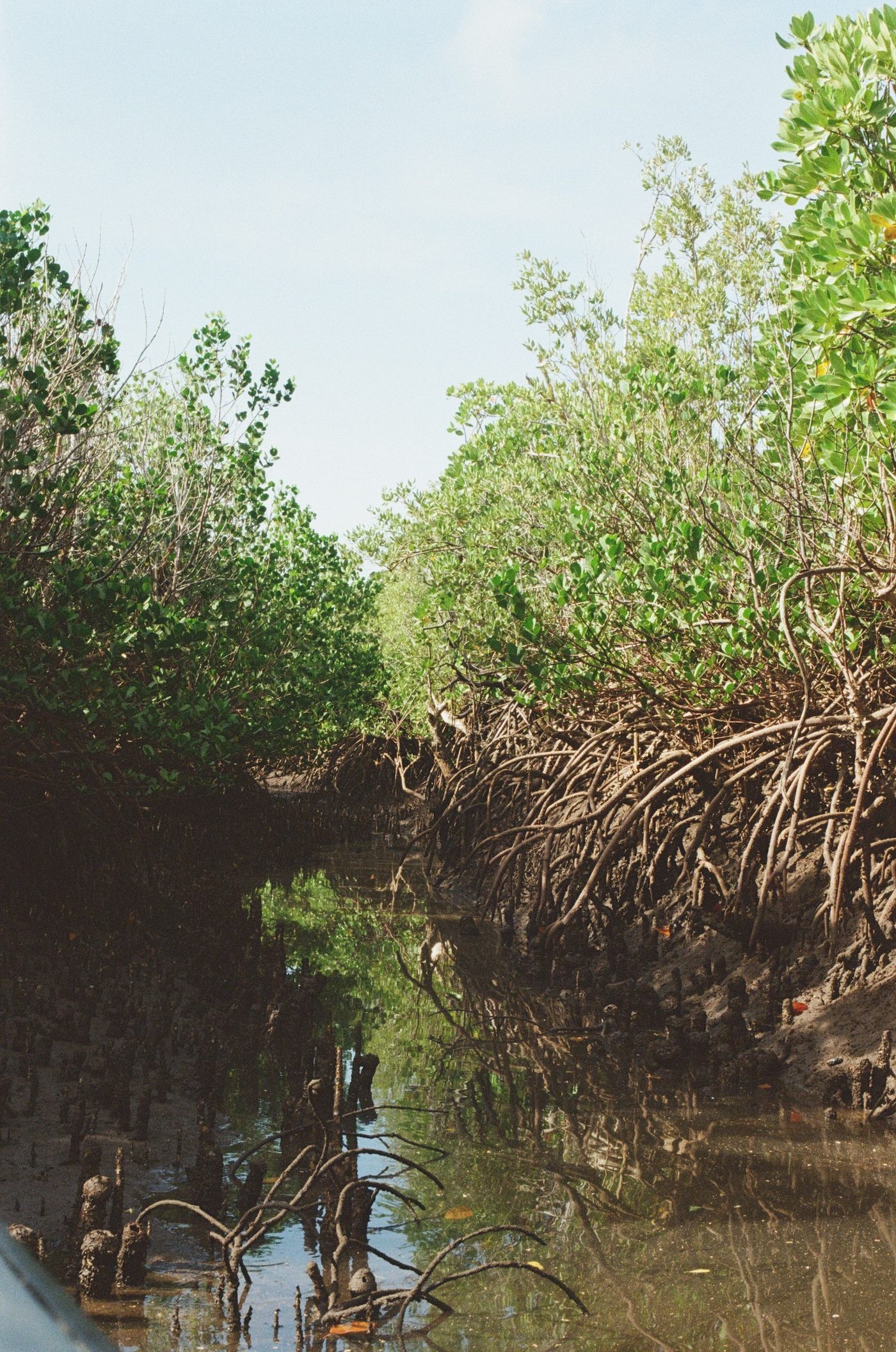
Sailing in the mangroves. Credits: Yassine Rachidi
As coastal ecosystems, mangroves live between land and sea, constantly negotiating shifting tides and saline thresholds. Their tangled root systems stabilize shorelines, absorb carbon, and protect against erosion. But they also function socially with their neighboring communities and settlements as sites of labor, contested ownership, and political power struggles. Working with mangroves on a metaphorical level meant working with entanglement itself: layers of ecological, historical, material, metaphorical meaning. We were drawn to them because they demand a mode of attention that resists quick resolution.
Rather than arriving with fixed ideas and artistic agendas, we began the first residency in October 2024 with a shared commitment to listening: to the land, the water and the people. We spent days moving through the Lamu settlement and the mangrove forests – by boat and on foot, capturing soundscapes and spatial impressions, conducting interviews and collecting fragments, photographs, and notes on how we as outsiders and as artistic researchers moved through this space.
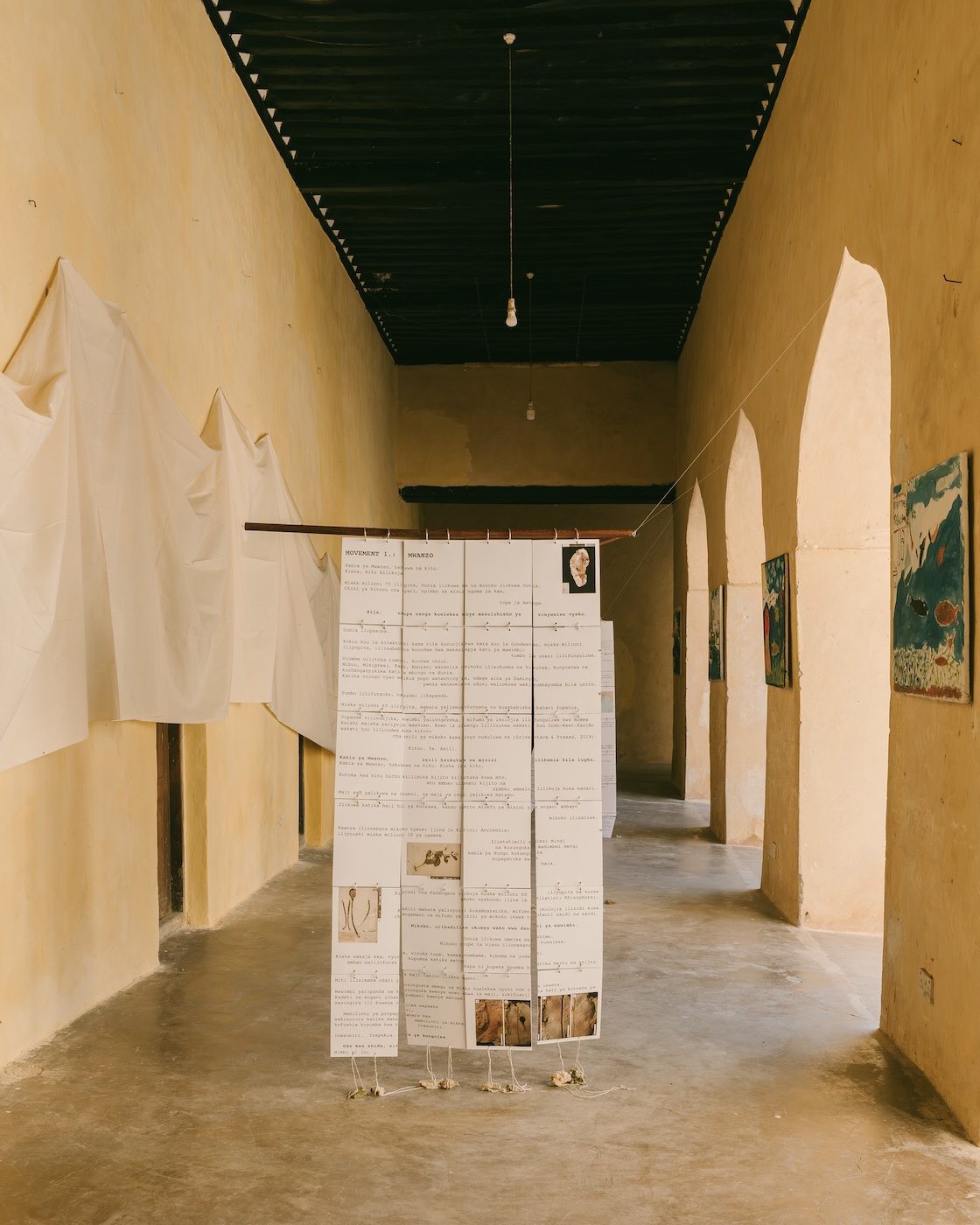
Installation view „Radio Mikoko+“, Tidal Movements, 2025. Prints on paper. 22 x 28 cm. 80 pp. English/Swahili, by Yassine Rachidi. Credits: Freddie Odede, 199xorg
This slow accumulation laid the groundwork for our interventions: a series of workshops and conversations during the second residency in March 2025, which culminated in an installation in Lamu. Titled Radio Mikoko+, a temporary radio program broadcasting local voices, mangrove and Lamu soundscapes, as well as live reflections from the four of us. The installation shown in Basel in June was not a grand display of final artworks but rather a condensed echo of our time in Lamu. It was not an attempt to transplant the project, but to see what remains, what translates, and what inevitably shifts when contexts change.
Yet, the question remains the same. What can art possibly offer in the face of crises? What does it mean when it addresses ecological breakdown not from the periphery, but from within the very structures that often contribute to it?
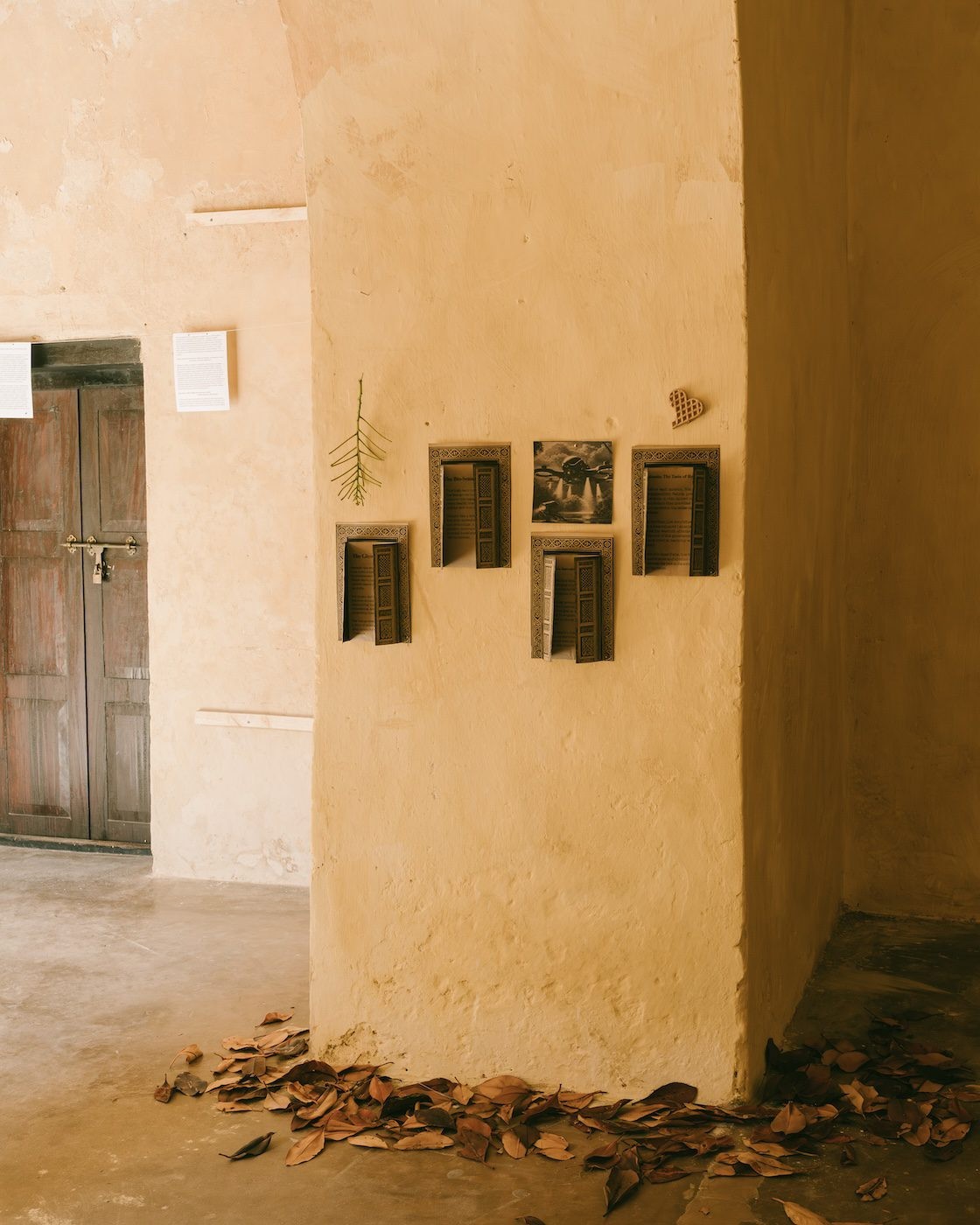
Installation view „Radio Mikoko+“, Doors to «Rooted», 2025. Prints on paper various objects (existing and speculative) text, by Ann Mbuti. Credits: Freddie Odede, 199xorg
The Question of Impact
From the beginning, the project’s architecture included a moment of reflection on the work in the context of Switzerland, from which it emerged as part of a binational initiative supported by the Swiss Arts Council. Operating within a postcolonial and ecologically threatened setting, projects like ours could not pretend to stand outside the dynamics they seek to explore. Instead, we tried to situate ourselves within these dynamics and ask: What does it mean to conduct artistic research in a context shaped by asymmetries of power and histories of extraction? What forms of exchange are possible? What forms of care are required? From early on, our conversations with representatives of our local project partner, the Lamu Youth Alliance, consistently circled around the question of impact, how art can make a tangible difference in the community. But what kinds of impact can be meaningfully imagined?
To make matters worse, “impact” is a slippery term, especially in the context of art. What constitutes it, and who gets to decide? Is it about visibility, engagement, infrastructure, long-term transformation? In the case of Mangrove Ecologies, “impact” took different forms depending on where and how you looked. In Lamu, it meant site-specific gestures, such as workshops with students, shared listening sessions on the main square, spontaneous conversations with the community, a public iftar. These small-scale interventions unfolded quietly; so what if the forms of attention, care, and connection that art offers are too slow, fragile, or ambivalent to be measured by conventional success metrics? The installation in Basel on the other side – art-world framed, institutionally recognized, and materially embedded in a global context, brought up a tension. How do these gestures relate?
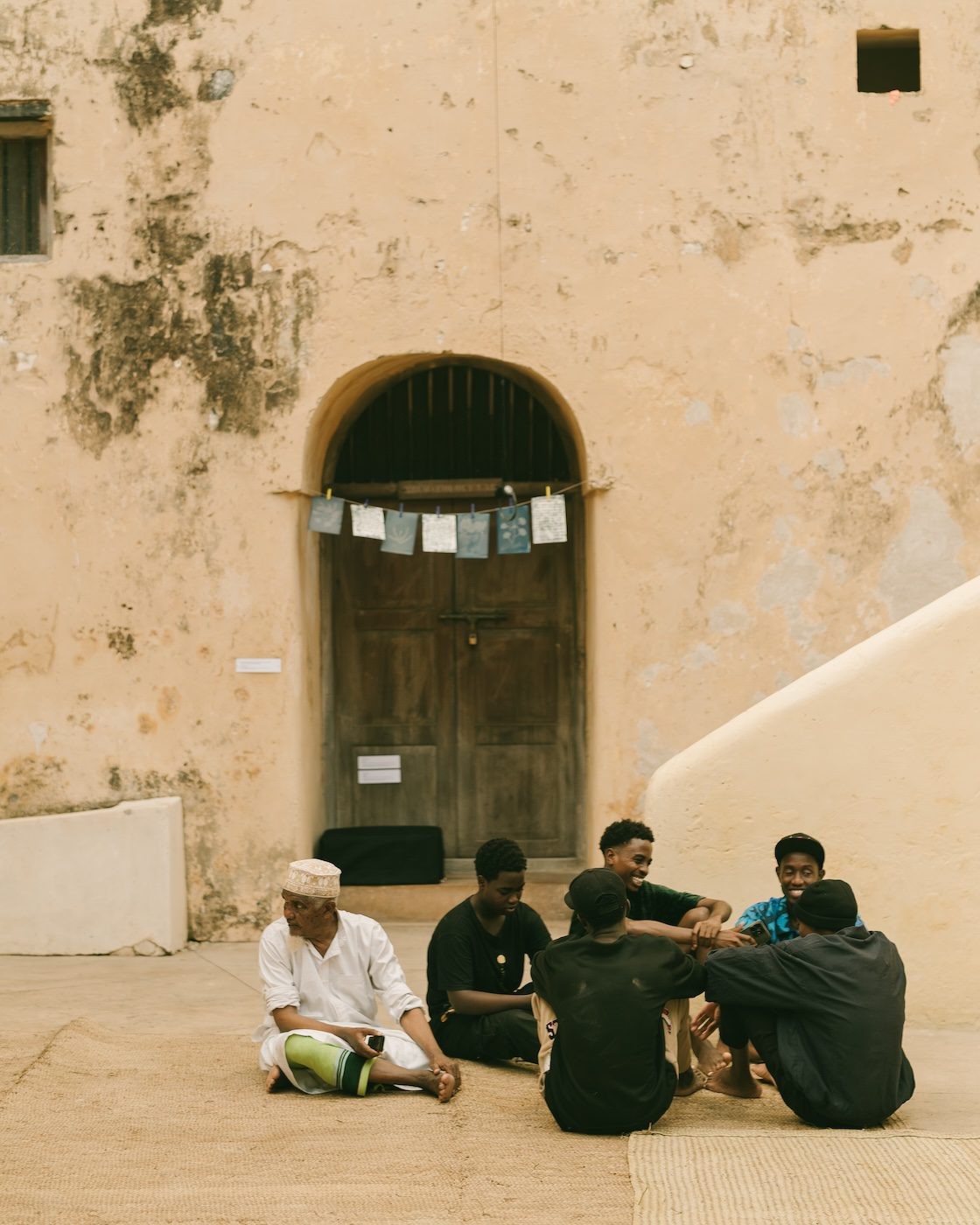
Installation view „Radio Mikoko+“. Credits: Freddie Odede, 199xorg
Rather than resolve the contradiction, it made it visible. The translation between the different contexts revealed the dissonance between the sites of action and reflection, between fragile fieldwork and institutional framing. And in doing so, it allowed the project to remain what it always was: an attempt. A careful, incomplete choreography across ecosystems, economies, and epistemologies – with all the friction that comes with it.
We often asked ourselves: what exactly are we doing there in Lamu? What kind of impact can an arts residency have in such a setting? Can workshops, interviews, sound pieces and installations offer something meaningful to the people who are associated with the project – or are we merely staging another well-documented gesture of cultural production, soon to be forgotten?
Coping as Form
The project has no easy answers. But over time, what began as a series of abstract doubts started to shift. Not into certainty, but into more grounded forms of questioning: The more time we spent with the mangroves – boating through them, listening, speaking with those who depend on them or are dedicated to protecting them –, the clearer our framework for working with rather than on mangroves became. The metaphor of mangrove ecologies became a method. They taught us how to work with tension, with overlap, with fragility and how to stay rooted and responsive at once – mirroring the very conditions under which socially engaged art practices must operate.
Ann Mbuti is a professor of process design and an independent writer specializing in contemporary art and pop culture. Her work focuses on artistic projects with the potential for social, political, or environmental change.
Read more from
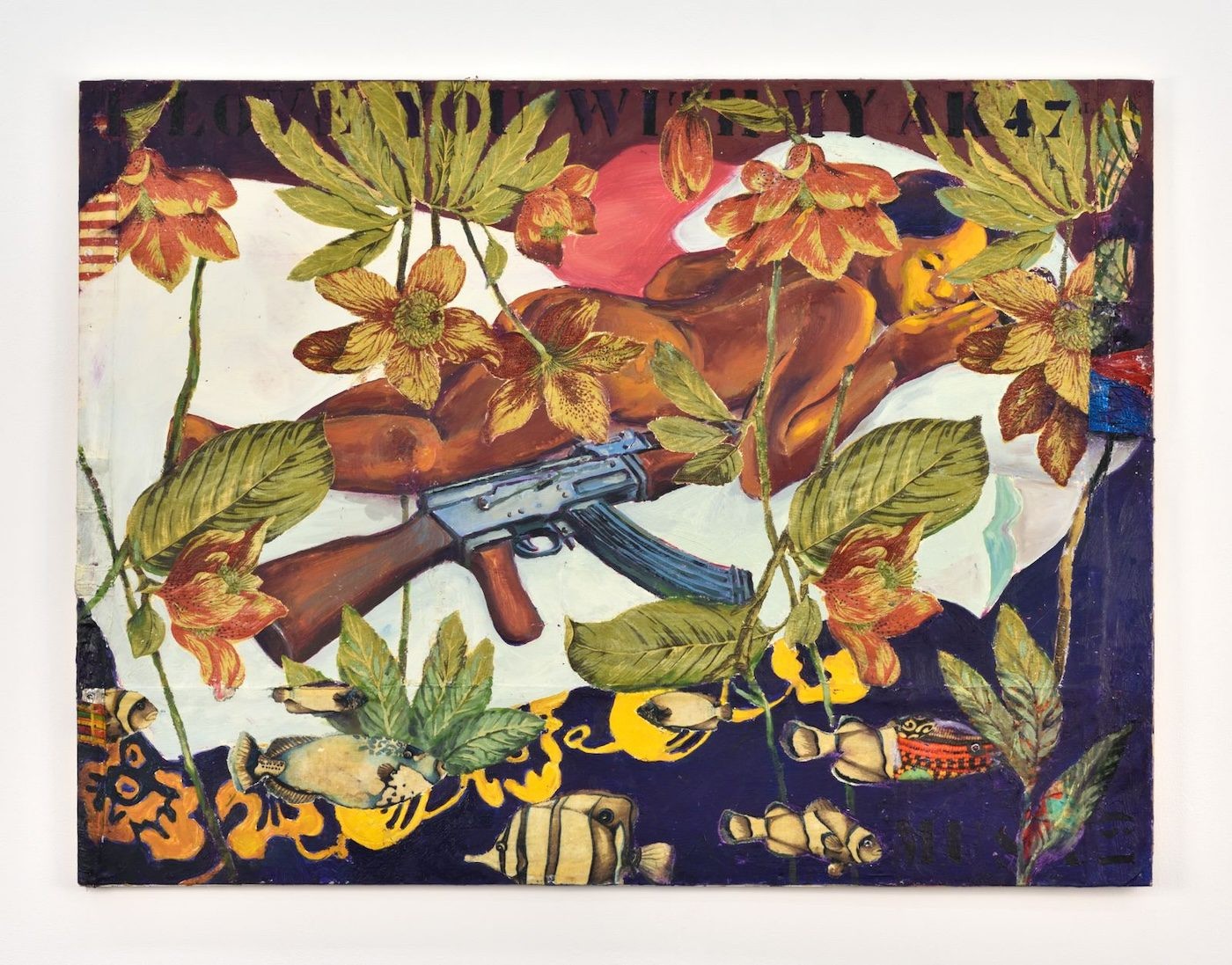
Sudan Art Archive Aims to Reclaim a Canon from Afar
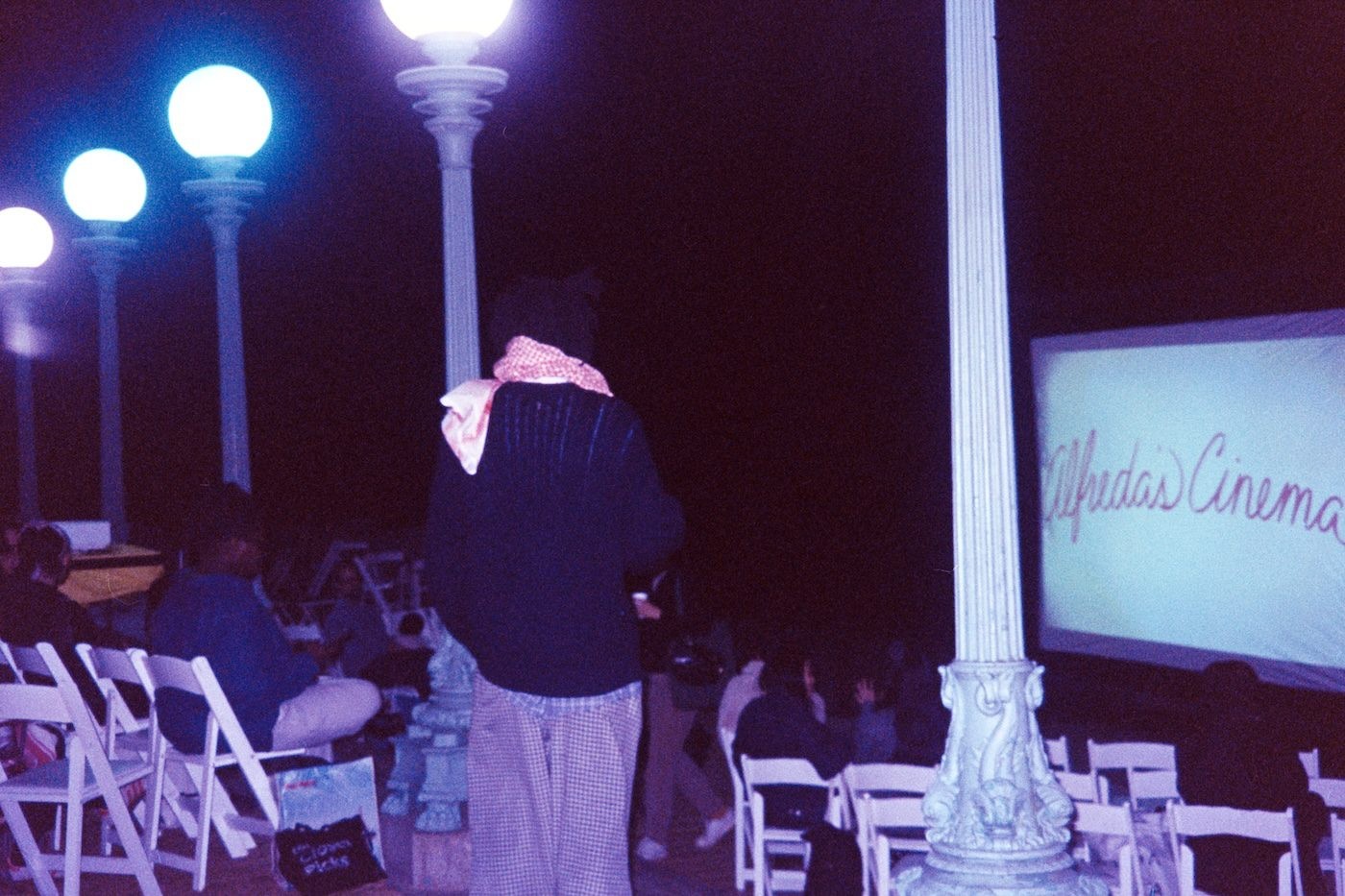
Imagining a Future for the Arts in the US
Read more from
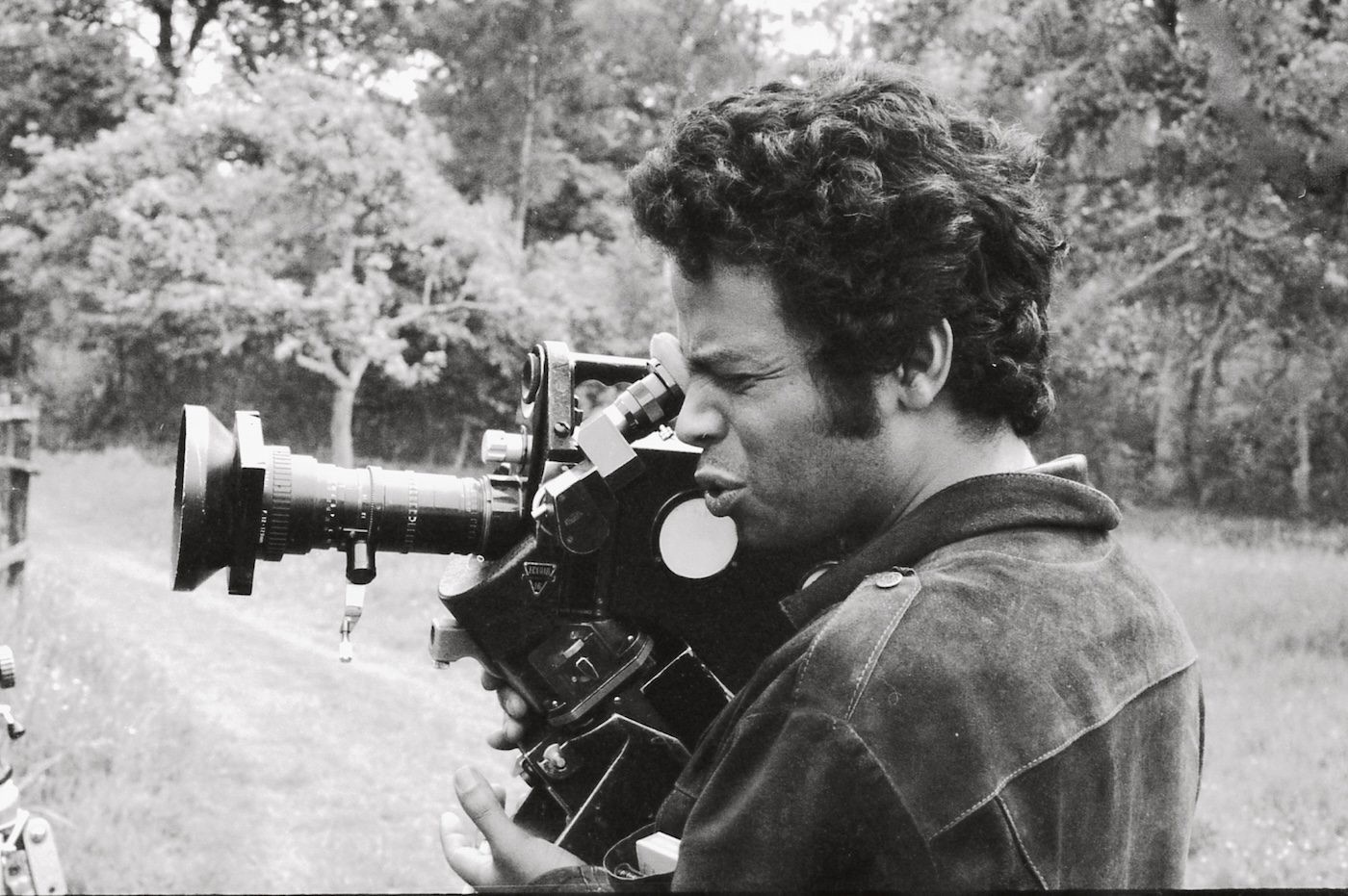
Image Interventions in "The African Gaze"
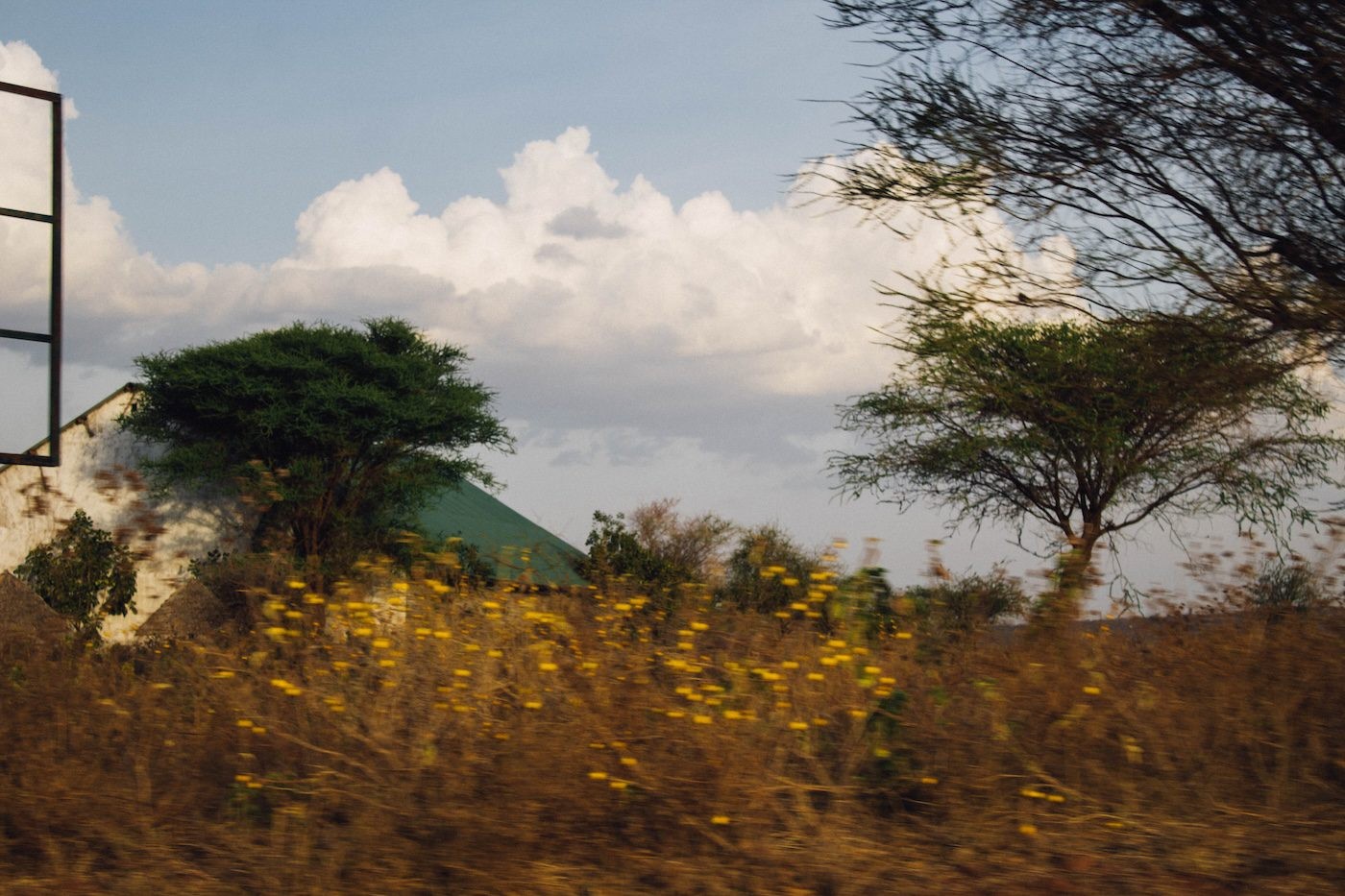
To Spring From Salted Earth
